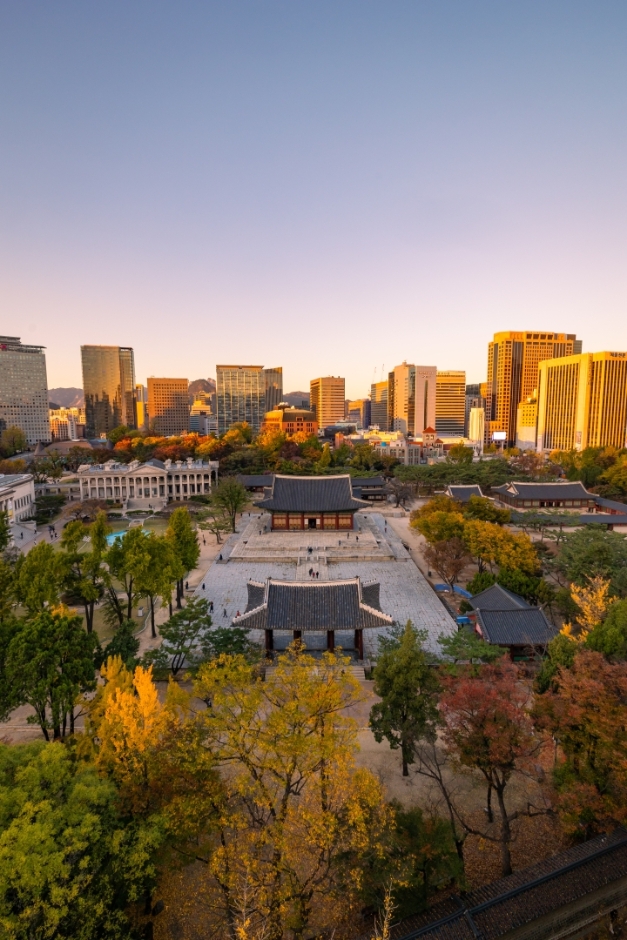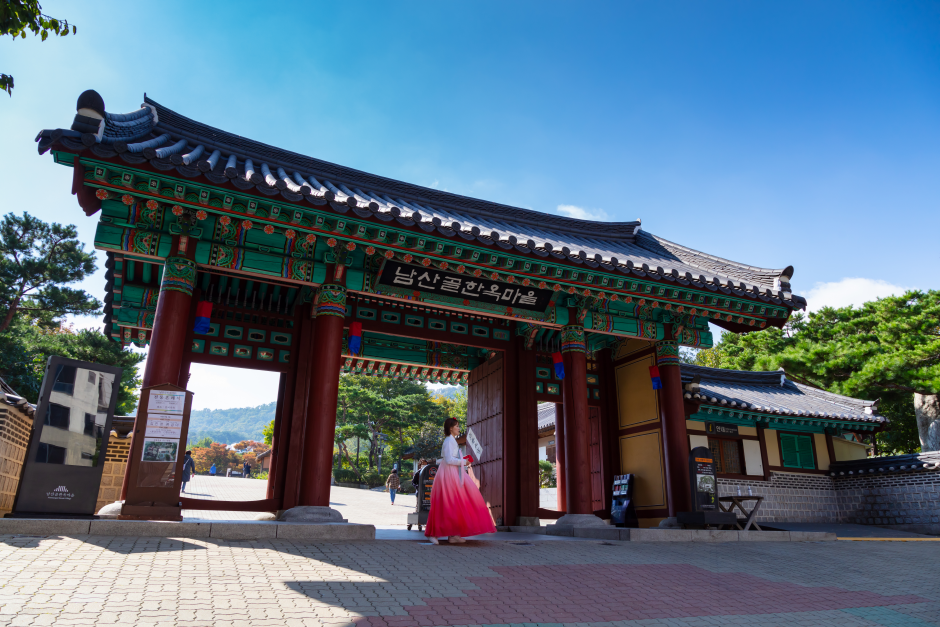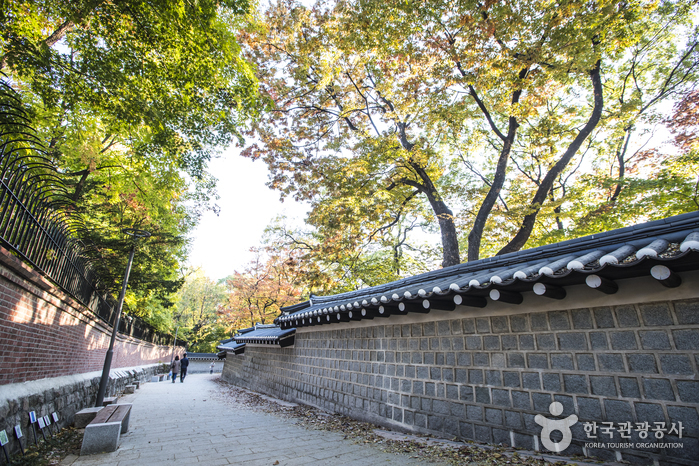Stylenanda Flagship Store - Myeong-dong Branch [Tax Refund Shop] (스타일난다플래그쉽스토어 명동)
10.7Km 2024-06-27
37-8, Myeongdong 8-gil, Jung-gu, Seoul
-
Deoksugung Palace (덕수궁)
10.7Km 2025-06-25
99 Sejong-daero, Jung-gu, Seoul
Registered as a Historic Site, Deoksugung Palace was initially not a royal palace, but the residential home of Grand Prince Wolsan (1454-1488), the older brother of King Seongjong (1469-1494) of the Joseon dynasty. It wasn't until 1593 that the palace was used as a temporary palace of the royal family after their home was burned down during the Imjin War. King Seonjo also stayed at Deoksugung Palace after returning to the city. It became a proper palace when Gwanghaegun (1575-1641) ascended to the throne and gave this royal residence the name Gyeongungung Palace in 1611. Over the following decades, the palace alternated between being an official palace and a temporary residence. The name did not change officially to Deoksugung Palace, meaning the “palace of virtuous longevity,” until 1907. While the palace once encompassed a vast area with many buildings, the current palace grounds are just a small shadow of the prior splendor, with very few structures remaining.
On The Spot - Myeong-dong Branch [Tax Refund Shop] (온더스팟 명동점)
10.7Km 2024-04-18
37-4, Myeongdong 8-gil, Jung-gu, Seoul
-
Namsangol Hanok Village (남산골한옥마을)
10.7Km 2025-07-14
28 Toegye-ro 34-gil, Jung-gu, Seoul
Namsangol Hanok Village opened in 1998 on the northern side of Namsan Mountain in the center of the capital. This village has five restored hanok (traditional Korean house) premises, a pavilion, a traditional garden, a performance art stage, and a time capsule plaza, making it a perfect spot for locals and tourists to take a leisure walk. Upon entering from the front gate, visitors will get a taste of Korea's traditional life while escaping from bustling city life. The traditional garden with its pavilion and old houses creates a peaceful ambiance before the forested Namsan Mountain. A time capsule commemorating Seoul’s 600th anniversary was buried in 1994 at the highest point of the village and is scheduled to be reopened 400 years later in 2394.
The five hanok premises at Namsangol Hanok Village once belonged to aristocrats and government officials of the Joseon dynasty. Each house was originally located in a different neighborhood, but they were all moved to this area and restored to their original form. The houses were rebuilt using their original materials, except for one house, where the materials were too old and deteriorated to be reused. The premises were carefully restored and replicated according to their original form to depict the owners’ social class and personality. These buildings are now used as an exhibit to portray the living environment during the Joseon dynasty and as a venue for educational and cultural programs for children and tourists.
Some of the unique programs and activities to participate in include wearing hanbok, folding hanji (traditional Korean paper), writing in Korean, traditional tea ceremony, traditional etiquette school, and herbal medicine experience. There are also taekwondo demonstrations and other various performances held around the village. Visitors can also try traditional games such as yunnori (traditional board game), or understand more about the area through a guided tour.
Wellness Pharmacy [Tax Refund Shop] (웰리스약국)
10.7Km 2024-04-19
51, Myeongdong 10-gil, Jung-gu, Seoul
-
Banila CO. - Myeong-dong Branch [Tax Refund Shop] (바닐라코 명동점)
10.7Km 2024-04-22
38, Myeongdong 8-gil, Jung-gu, Seoul
-
Wellness Pharmacy [Tax Refund Shop] (웰니스약국)
10.7Km 2024-06-27
51, Myeongdong 10-gil, Jung-gu, Seoul
-
The Saem - Myeong-dong Branch (No. 1) [Tax Refund Shop] (더샘 명동1호점)
10.7Km 2024-04-16
41, Myeongdong 8-gil, Jung-gu, Seoul
-
Hotel The Plaza (플라자호텔)
10.7Km 2019-02-07
119, Sogong-ro, Jung-gu, Seoul
+82-2-771-2200
The hotel is ideally situated in the center of Seoul, located close to many office areas, major banks, the hotel, and the city's main public transportation junctions. Namdaemun Gate and many shopping areas are not too far, making it convenient for business guests and tourists alike. Also, the hotel faces the Blue House and the former City Hall building directly at closer distance, completing a spectacular view over Seoul.
Deoksugung Stone Wall Path (덕수궁 돌담길)
10.7Km 2025-01-10
24 Sejong-daero 19-gil, Jung-gu, Seoul
The Deoksugung Stone Wall Path runs along the wall of Deoksugung Palace. It is beautifully lit and landscaped, giving it a romantic atmosphere even at night. There are street performances and flea markets, and the area boasts many famous cafes and restaurants along Jeongdong street. In autumn, the ginkgo trees and walls form a stunning scene. Close to major cultural facilities such as the Seoul Museum of Art and Seoul Museum of History, it attracts numerous visitors come for a stroll.
![Stylenanda Flagship Store - Myeong-dong Branch [Tax Refund Shop] (스타일난다플래그쉽스토어 명동)](http://tong.visitkorea.or.kr/cms/resource/53/3314453_image2_1.jpg)

![On The Spot - Myeong-dong Branch [Tax Refund Shop] (온더스팟 명동점)](http://tong.visitkorea.or.kr/cms/resource/42/2878642_image2_1.jpg)


![Wellness Pharmacy [Tax Refund Shop] (웰니스약국)](http://tong.visitkorea.or.kr/cms/resource/54/2878654_image2_1.jpg)

 English
English
 한국어
한국어 日本語
日本語 中文(简体)
中文(简体) Deutsch
Deutsch Français
Français Español
Español Русский
Русский